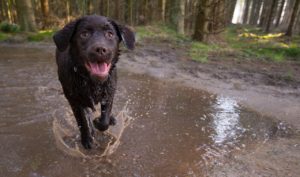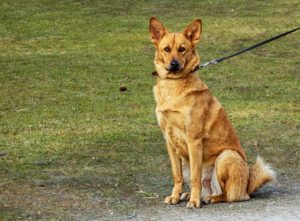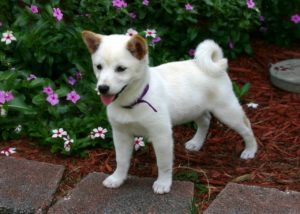Just like children, dogs are well-loved members of our families. But what happens when you get a new dog, or a new baby arrives? We take a look at the best way to introduce your dog to a baby or child, and find out how to avoid any potential problems which may occur.
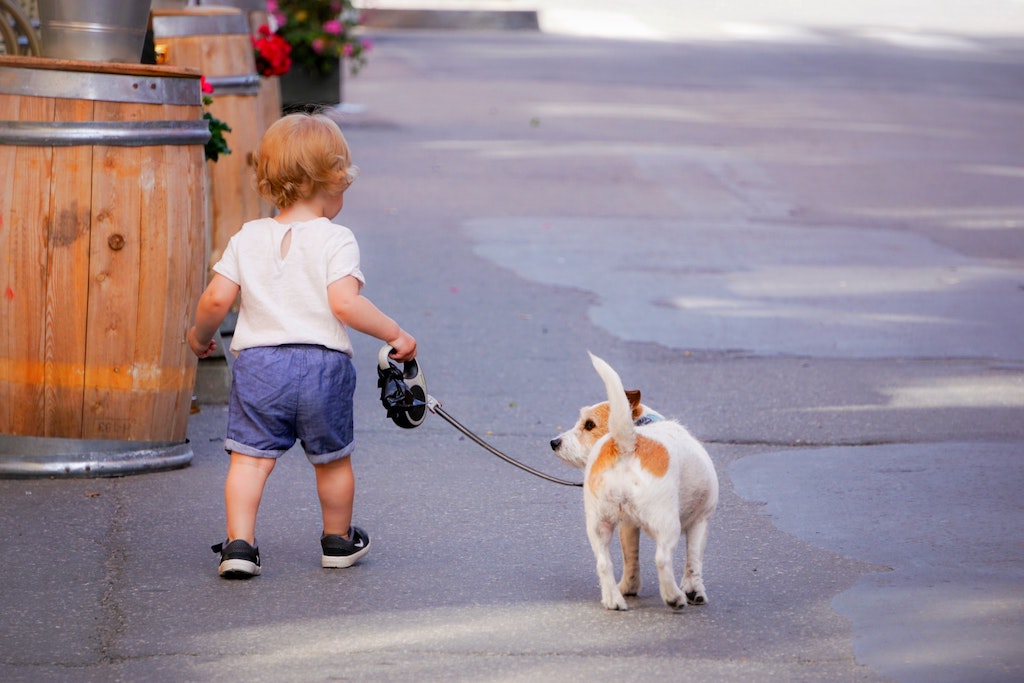
When we bring a new dog into the family, or are blessed with a new baby, it is natural that we want them to love each other. However, like all new relationships, it takes time to develop a close bond. It is important to take the time to introduce them to each other slowly and carefully to help them develop a life-long friendship.
Understandably, your child will be very excited at the prospect of a new dog! However, children may struggle to understand the dog’s signals and body language. They may not recognise when the dog is feeling uncomfortable or scared. Younger children may also handle the dog too roughly, not understanding the difference between the dog and their fluffy toys.
Dogs may also find children confusing – many adult dogs may never have been socialised with children. It is not unheard of to come across dogs who are genuinely scared of children! Dogs can find children difficult to understand. Children give out erratic signals and often behave very differently from adults. Children can also be very noisy, as we all well know!
Always remember the Golden Rule: Never leave a puppy or dog and a child alone together. Even the gentlest dog can react if they are feeling scared or in danger of being hurt. It is important that you are always on hand to supervise. Your child may not be aware that they are in danger of being bitten.
Introducing Adult Dogs to Children
Preparation:
The key to successfully introducing your child to a new adult dog is to be prepared. It can be useful to set a list of ‘rules’ to follow as a family, such as:
- Quiet voices only around the dog
- Don’t interrupt the dog if it is eating or sleeping
- Stroke the dog gently if it comes for attention, but don’t follow it if it moves away
- Keep children’s toys packed away or in a different room
The Introduction Itself:
Ideally, your new dog and children will have met before your dog arrives at your home. Many rescue shelters will facilitate family introduction sessions, allowing your dog to meet his new family in a safe place. If your new dog comes from a breeder, ask if they will allow you to visit a few times before you bring your dog home.
When your child and dog meet for the first time, they may both be a bit wary of each other. Keep the environment calm and quiet, and avoid treats or toys which may cause excitement. It may be advisable to keep the dog on a leash for the first few interactions.
Allow your dog to walk calmly up to your child. Ask your child to sit quietly on a chair or on the floor, this will help to avoid any erratic movements. Let your dog sniff your child – this is the doggy way of saying ‘hello’ and helps them learn about who you are. When you feel the time is right, let your child touch the dog, starting with the head and neck rather than the face.
If your child is old enough to understand, this can be a great time to start teaching them how to read your dog’s body language. Help them to learn that a waggy tail is a friendly greeting, and to recognise the signals that the dog may not be comfortable with a situation.
What next?
If this first interaction went well, great! Repeat this a few times over a couple of days, then start to build on these sessions by taking the dog off the leash and allowing them to move around the room together. Older children might want to start some training exercises to establish communication, such as a basic ‘sit’ command.
The level of freedom you allow your child and dog to play together depends entirely on your individual situation. Monitor your dog and child closely to see how their relationship develops, and if either is feeling nervous or overwhelmed then start with basic interactions again. It is better to take the time to get this right, so your dog and child get the chance to build a wonderful bond which will last a lifetime.
Introducing Adult Dogs to Toddlers
Bringing a new dog into a home with a toddler can be quite a challenge. Toddlers will struggle to understand the boundaries we might set for older children so much closer supervision is required. Children of this age are also unpredictable, making sudden movements and loud noises which might scare your new dog.
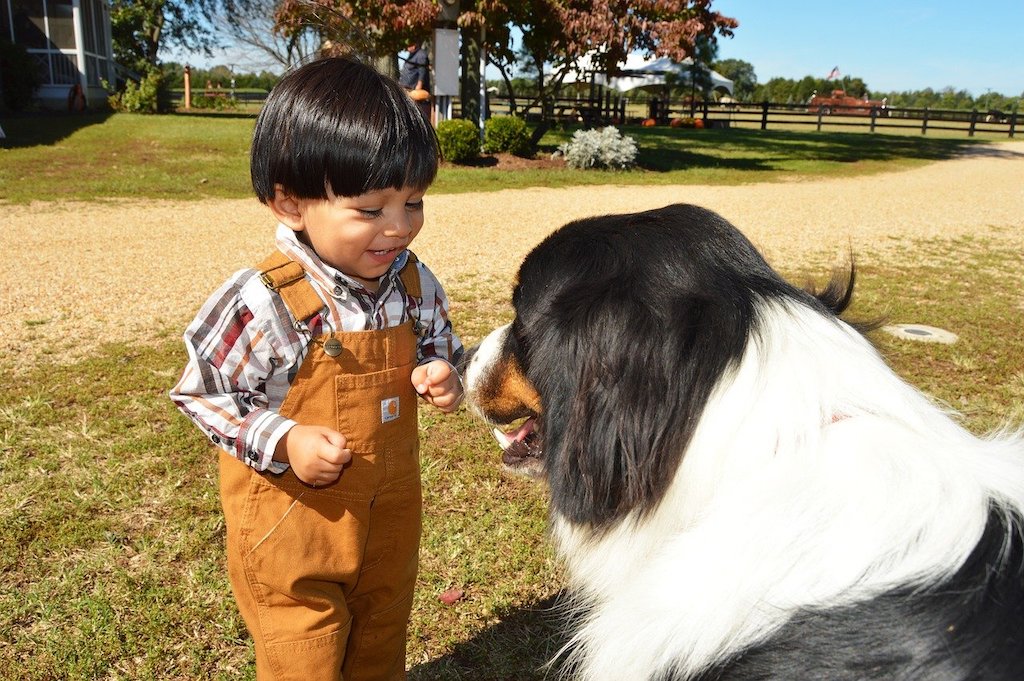
Many adult dogs may never have met a toddler, so they could be quite nervous at first. Allow your dog to watch your toddler from a distance before introducing them. It is a good idea for the child to be on the lap of another adult when the dog is first introduced, to keep the situation calm and prevent any accidental poking of eyes or ears!
In a situation with a toddler and dog in the same household, it is important that the dog feels that his precious resources, such as food and toys, are safe. It is a good idea to use baby gates to keep the dog and toddler separate when the dog is eating or sleeping. Although it may be difficult, try not to let them share toys – keep dog toys in the dog’s living area away from the child.
Introducing Adult Dogs to Babies
Preparation
In this situation it is most likely that you already have your pet dog established in the home, and you are bringing a lovely new baby into the family! This can be a difficult time for your dog. As well as getting to know a new family member, they will also inevitably experience change and disruption to their everyday lives. Planning ahead can help to keep this as stress-free as possible for your dog.
Although it may be impossible to predict, try to imagine what your routine may be like when the new baby arrives. For example, walks and feeding times may be at a different time of day. It may be that their boundaries need to change, with less freedom to roam the house and go into bedrooms. Start to adapt your dog to this new routine several weeks before the baby is due to arrive.
Babies can seem like odd things for dogs who haven’t met one before – they are loud, smell different and to a dog they look nothing like an adult human! Introduce your dog to as many baby-related experiences as possible before your own baby arrives. Use recordings and videos of baby sounds to familiarise your dog with these strange noises. Start using a little bit of the baby’s shampoo and body lotion on yourself so your dog can adjust to the smell.
Having the home set up ready for the baby will let your dog get used to these changes before the baby arrives. Unpack all of the additional objects which come with a baby well in advance, such as baby seats and carriers. Even though your baby won’t be crawling for some time, installing baby gates can help your dog to understand their new boundaries.
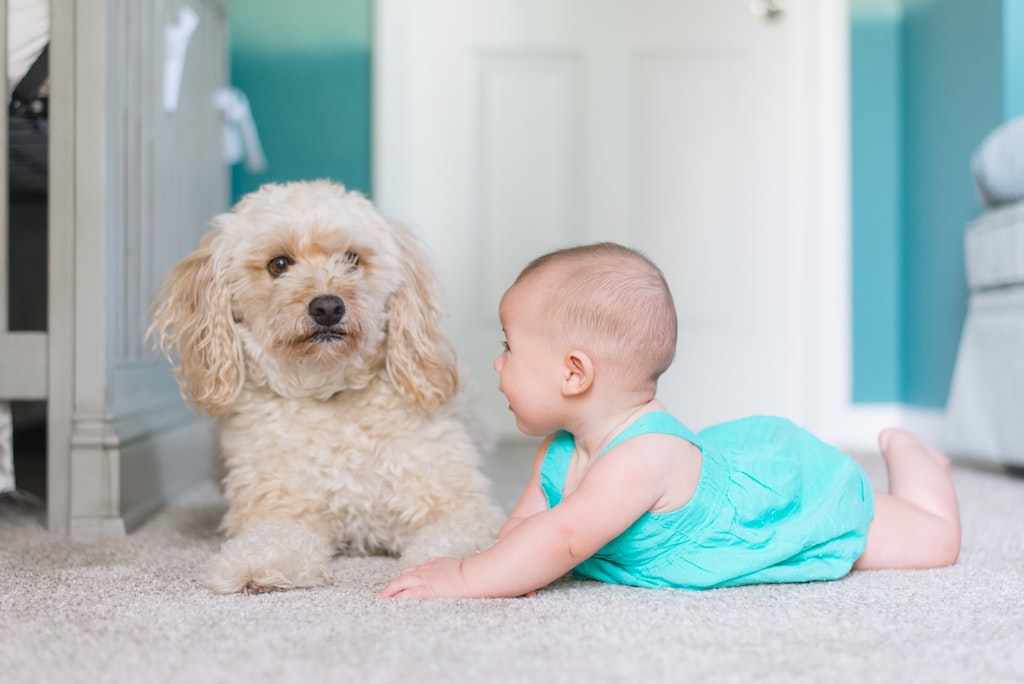
The Introduction Itself:
When the time comes to bring your lovely new baby home, remember that your dog will be very excited to see everyone, not just the baby! Allow the dog to greet all the familiar family members first. Wait for this initial excitement to pass before introducing the baby. It may be that you decide to delay the introduction for a few hours or even days. This would allow your dog to get used to the smell and sound of the baby first.
When you think the time is right, sit down with the baby in your arms in a quiet room. Your dog should be allowed to approach on a leash. Talk calmly to your dog and let them greet you as normal. If they seem relaxed and happy, then let your dog sniff the baby – the feet is a good place to start! If this goes well then praise your dog, give a reward and ask them to sit or lie down. This can be repeated several times, until your dog shows little interest in the new baby.
Introducing Puppies to Children
Bringing a new puppy into the home can be hard work, and in a busy family with children and babies this job becomes even harder! As well as taking all of the previous advice into consideration, we also need to think about socialization for your puppy. Getting this right from the start can make all the difference in creating a happy and harmonious family.
When meeting children for the first time, it important that the puppy can initiate the encounter on their own terms. Sit quietly on the floor with your child and allow your puppy to come up to you in their own time. Avoid passing your puppy to your child, and do not let your child pick up the puppy. Keep the encounter calm and relaxed – the time for play comes later on, now is the time for cuddles!
You’re ready for the next step
Carefully introducing your new dog or puppy to your family is one of the most important things you can do for them. Taking your time over this delicate stage will lead to a happy and confident dog. Are you ready to help your new pet become a happy and thriving member of your family?


